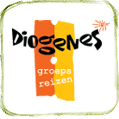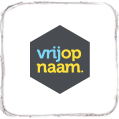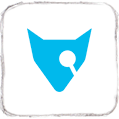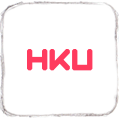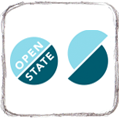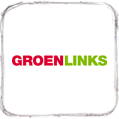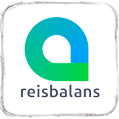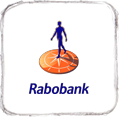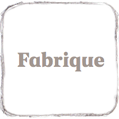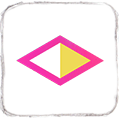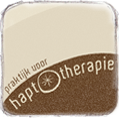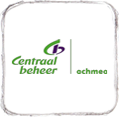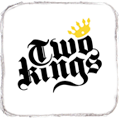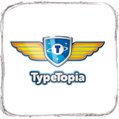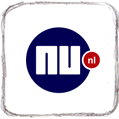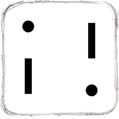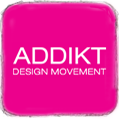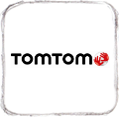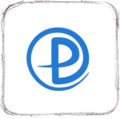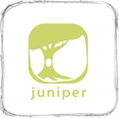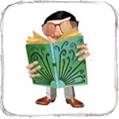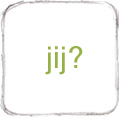As a freelance interaction designer, I can be hired on an hourly basis. I work for agencies as well as for clients directly, preferably (partly) at your location and for four days a week.
I am here to help you make your next product or service easier to use and more attractive. Your users should feel happy and smart when they use your website or application. To realize this I study your user and invite him (or his representative in your organization) to work with me on the design. Call it iterative, agile or lean: I do what needs to be done, I am a hands on kind of guy, and I always provide visuals to facilitate the discussion. This way, we will reach a user-friendly and attractive solution, which will be supported in your organization and serves your users best.
Advice and support on human centered design processes
Since 2004, I have been designing human centered products and services, always aimed at serving potential users in the best possible way. I would like to help your organization to start thinking and designing like this, too.
Like for:
- How can I help?
-
Actively involve your end user
-
Empathize with your user
-
Aims and needs of users
-
Iterative design
-
Operate in multidisciplinary teams
-
Problem definition and analysis
Before we can start designing a website or application, we need to formulate the exact purpose of the product. I will describe the targets of your organization and (intended) user, and then investigate existing solutions and suggest possible strategies and/or improvements.
Like for:
- How can I help?
-
Problem definition and targets
-
Business / user needs and features
-
Brainstorm / post-it session / workshop
-
Competition analysis
-
Expert review
-
Formulating design principles
-
Product personality, tone of voice
-
Get to know your user
A great experience with your product or service starts with a sharp image of your user. The main focus should be on the people who will actually use the product. I need to find out who they are, how they feel, what they think and do.
Like for:
- How can I help?
-
Targets and needs users
-
Personas and MBTI behavioural types
-
Top task analysis and top tasks
-
Use cases and scripts
-
Fieldwork and interviews
-
Usability (lab) test
-
Content, structure and navigation
Why do people still get lost on websites? If people can’t find your product or service, they can’t buy it. Allow me to help you discover what your clients expect (and where they expect it), in order to optimize your navigation structure.
Like for:
- How can I help?
-
Card sorting (analogue or via online tool)
-
Expert review
-
Flow charts
-
Information architecture
-
3D sitemap
-
Designing together through iterative co-creation
A large part of my role as interaction designer is facilitating a creative design process by teaming up with the user (or his representative in your organization) to work on the design. In small repetitive steps we discover what it is your organization needs. This way, the design is perpetually tested. I work with ample visual material to express my thoughts.
Like for:
- How can I help?
-
Sketching
-
Brown paper sessions and post-its
-
Sketch board sessions
-
Paper prototyping (workshops)
-
Discussing/testing wireframes
-
Discussing/testing interactive prototype
-
Sketching
Sketching ideas during sessions will help us understand each other faster and better: collective visual thinking. Sketches are quickly drawn and cheap. Putting them up and discussing them with all the stakeholders will establish a creative vibe, the best condition for the best ideas.
Like for:
- How can I help?
-
Sketching with paper and pencil
-
Brown paper sessions and post-its
-
Sketch board sessions
-
Paper prototyping (workshops)
-
Wire frames and journey maps
-
Sketch notes and visual notes
-
Prototyping
Prototypes come in various forms and sizes: from a sketch on a piece of paper to detailed clickable screen designs. A prototype enables us to visually document, share and test ideas. People will quickly understand the matter and more and better ideas will arise. Through repetitive testing and quick adjustments, we will ultimately reach the user-friendly and attractive solution, which will be received auspiciously by both your organization and users.
Like for:
- How can I help?
-
Paper prototyping (workshops)
- Interactive prototypes:
- Clickable sketches / Zurb / POP
- Axure
- Html
-
Discussing/ testing prototype
-
Usability (lab) test
-
Multiple thinking frames as inspiration
I use a great deal of thinking frames and principles to test and improve a design. They provide a great source of otherwise undiscovered inspiration and insights. Also consider the reuse of existing design solutions and the possibilities of social media and the responsive web.
Like for:
- For example:
-
Heuristics Jakob Nielsen
- Persuasive design, conversion
-
Design patterns and standards
-
Social web: communities, connecting man and knowledge, open source, open data and API’s
-
Mobile, responsive web and media queries
-
Social media integration: Twitter, Facebook
-
Disruptive / out of the box thinking: critical contribution
-
Design thinking
-
Visual design
I am happy to contribute to the visual design and detailing. I feel it is important to stay close during this phase of the project to be on top of things and continue to test the design over and over again. I can apply my personal visual signature or start from your company’s style.
Like for:
- How can I help?
-
Visual design based on prototype
- Details: detailed and precise
-
Applying gestalt psychology
-
Working with Photoshop, Illustrator etc.
-
Working with HTML5 and CSS3
-
The social web as inspiration
Communities, open source technologies and social media offer numerous possibilities for your website or application. Internet was created to connect people and knowledge. I love to work on products, which are essentially meant to share knowledge (freely and generously).
Like for:
- For example:
-
Social web: communities, connecting people and knowledge, open source, open data, API’s
-
Semantic web, RDFa, microformats, and schema.org
-
Drupal CMS
-
- Social media integration: Twitter, Facebook
-
Technologies
To design for interactive media, interaction designers need to know what is technically possible and effective. I have worked as a web developer for a number of years and I still maintain a few web projects of my own and of others. I look forward to working with your developers towards the delivery of your product with a contribution to the front-end code.
Like for:
- How can I help?
-
Mobile, responsive web and media queries
-
HTML5 / Strict and W3C valid, CSS3
-
Backend experience:
-
Drupal CMS
-
JavaScript and jquery
-
PHP en Mysql
-
-
Semantic web, RDFa, microformats, and schema.org
-
Accessibility and web regulations
-
Version control
-
Testing, measuring results and structural improvements
And after the first delivery…we start over: measuring results, developing, a/b testing and optimizing. This way we measure the success of our ideas. And find out what needs to be improved. A small adjustment can cause a drastic change for your user. I can repeat this process for you a number of times, inventing, implementing and analysing, making sure your product or service is improving structurally.
Like for:
- How can I help?
-
Statistics and web master tools analysis
-
User tests, in lab, and via online tools:
-
Woopra
-
Clicktale
-
Loop11
-
Openhallway
-
Engage live chat
-
-
A/B tests
-
Making small improvements
-
Hear, Create and Deliver
In short, each project consists of three phases: Hear, Create and Deliver.
In phase one (Hear), we identify the targets and your user. This is the time to analyse, to get to know your user and be inspired.
In phase two (Create), I use the gathered information and inspiration to develop a prototype. This is the iterative phase with workshops, wireframes and lots of sketching to finally design the best solution.
In phase three (Deliver), I team up with developers to deliver your products. I contribute to the visual design, the details and front-end code, while constantly monitoring and testing the full design.
And then…we start over: measuring results, developing, a/b testing and optimizing. Small adjustments can lead to great changes.


